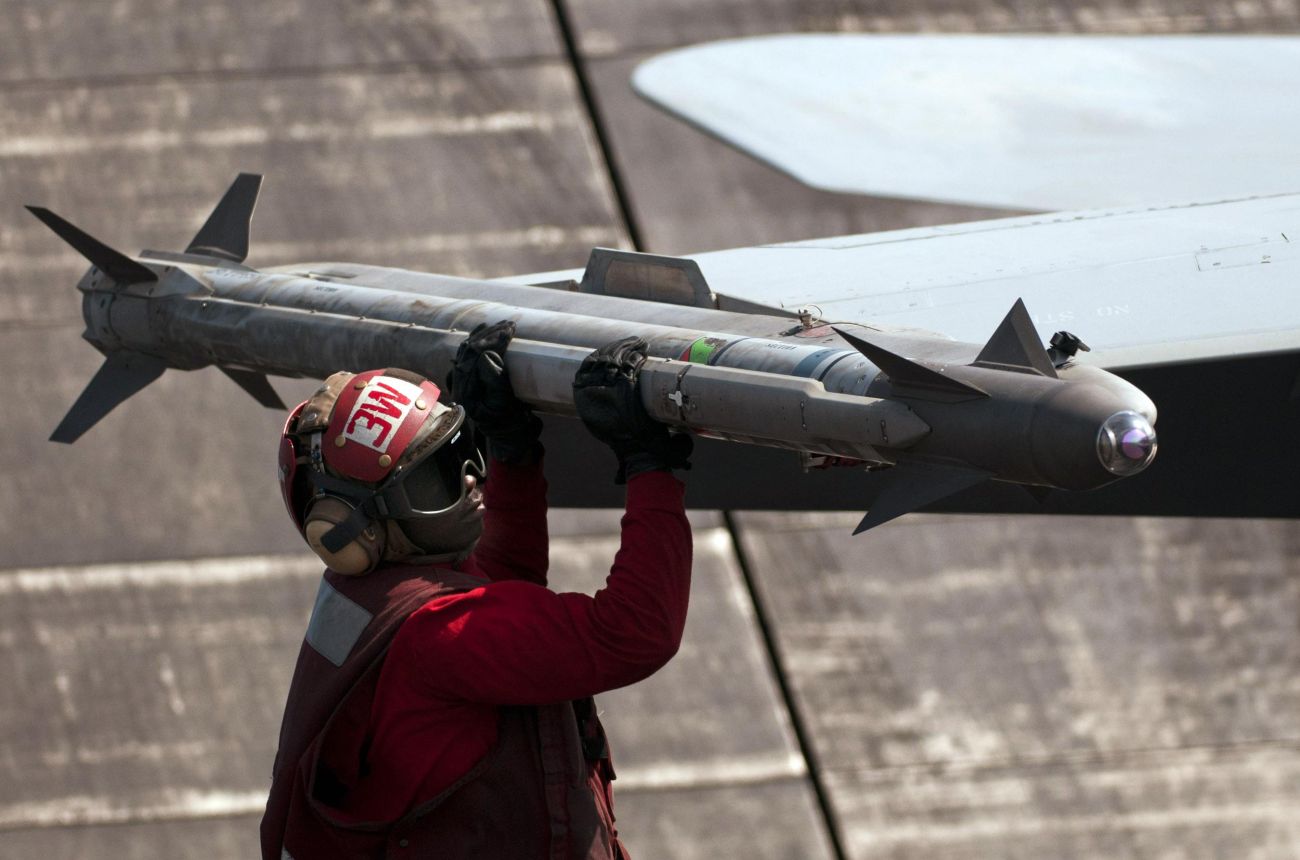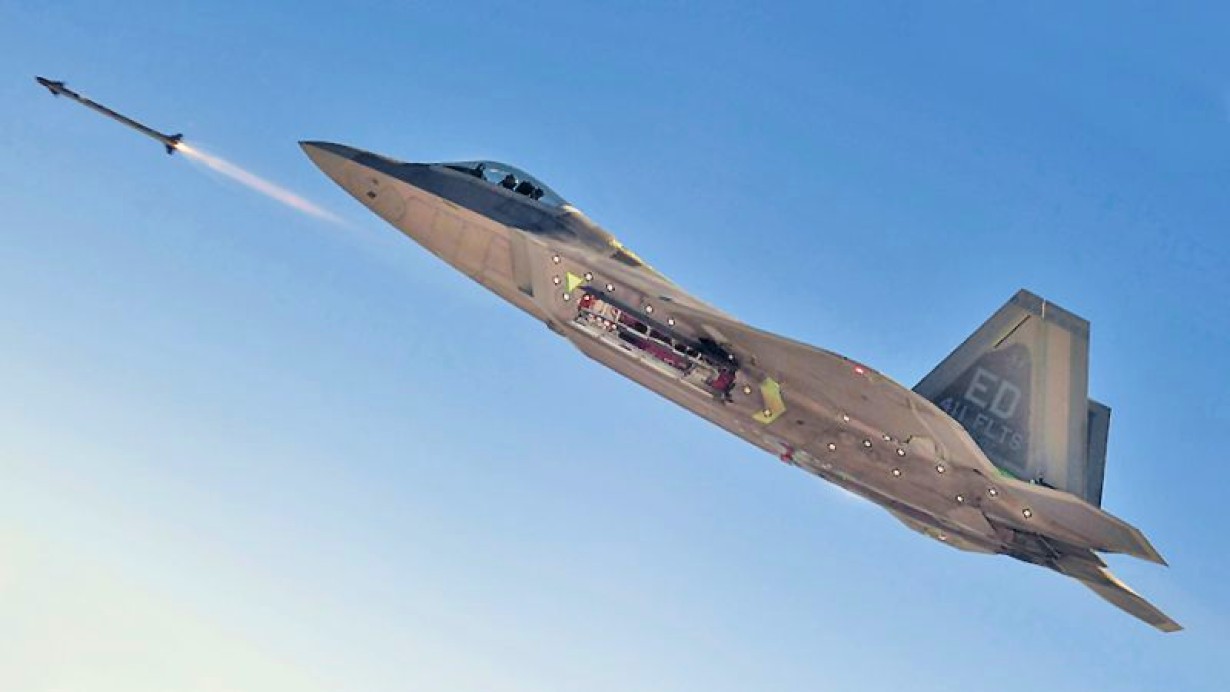The AIM-9 Sidewinder, introduced in the 1950s, is the world’s first heat-seeking missile and one of the most deployed missiles in the Western world. Thanks to China, Russia got its hands on it not once but surprisingly twice.
Soviet Union obtained the Sidewinder missile with the help of China’s PLA Air Force, which engaged in a series of intense air combats with the Taiwanese Air Force during the second Taiwan crisis in 1958.
As part of a highly secret mission called Operation Black Magic, the US Navy modified some Taiwanese F-86 Sabre fighters to carry the AIM-9B Sidewinder missile, which was first used during aerial combat on September 24, 1958.
The Sidewinder did wonders for the Taiwanese Air Force, which claimed nine ‘confirmed’ and two ‘probable’ kills and damaged one MiG aircraft. This marked the first time that guided air-to-air missiles were used in combat. It was definitely a resounding success without a single loss on the Taiwanese side.
However, the Taiwanese victory came at a considerable cost for the US, as one of the Sidewinders hit its target but failed to detonate.
The missile was found embedded inside the fuselage of a PLAAF MiG-17F. The Chinese engineers then removed this Sidewinder, disassembled it, and promptly rushed it to the Soviets, who had not seen anything as refined and small as the technology that went into the AIM-9’s gyroscope until then.
“The Sidewinder missile was to us a university offering a course in missile construction technology which has upgraded our engineering education and updated our approach to the production of future missiles,” Soviet engineer Gennadiy Sokolovskiy would later recount.
The Soviet engineers copied the missile’s infrared tracking, in-flight steering, and stability mechanisms and created their self-guided missile called the Vympel K-13 (NATO codename ‘AA-2 Atoll’).
The K-13 entered service in 1960, only two years after the Chinese seized the undetonated Sidewinder missile. Subsequently, the Soviets produced the R-3 version of the missile, which they began exporting to the Warsaw Pact nations.
The missile designs were also provided to China in return for their help in acquiring them. Based on these, China developed its own PL-2 missile, which became officially operational in 1967.

Missile Stolen Again
Acquiring the AIM-9B Sidewinder was undoubtedly a gift dropped in the lap of the Soviets by good fortune, which they exploited to a great extent.
However, the Americans had already begun working on more advanced iterations of the missile, and the Soviets simply did not have the technical prowess to keep pace with American advancements.
In the years that followed, the Soviets soon found out through air wars in the Middle East and Southeast Asia that the R-3S missile they had exported to their client nations was rapidly becoming obsolete.
So, on October 22, 1967, a German architect and a KGB spy agent in West Germany named Manfred Ramminger, together with his Polish driver Josef Linowski and German F-104 Starfighter pilot Wolf-Diethard Knoppe stole an operational AIM-9 missile from the Neuburg Air Base in erstwhile West Germany.
Ramminger managed to sneak into Neuburg Air Base in the evening by exploiting thick fog and careless guards and quickly loaded an operational AIM-9 missile from the local ammunition depot into a wheelbarrow, which he then wheeled down the entire runway to his Mercedes-Benz, parked outside the base.
The 2.9-meter-long missile would not fit in the back seat of his car, so Ramminger covered it with a carpet and smashed it out of the rear window. To avoid attracting the police’s attention, he tied a red piece of cloth to the protruding part, as required by German traffic laws.

He could reach his residence without any disturbance, after which he patiently disassembled the Sidewinder, loaded the pieces into a box, and mailed it to Moscow.
To avoid problems from the German or Soviet customs, Ramminger declared the parcel’s content as being for ‘low-grade export.’ Due to the parcel’s weight, the post charged him $79.25.
Also, Ramminger kept the fuse for himself, which he handed over to his KGB contact.
He then boarded a plane headed for the Soviet Union to collect the mail, only to learn that the package had not arrived. Frustrated, Ramminger returned to Germany and found that the airline had dispatched the box to the wrong destination. He then shipped the missile out again and bordered another plane for Moscow.
The Soviets must have been delighted to receive the new AIM-9 variant for $79.25. Soviet technicians once again reverse-engineered the improved Sidewinder variant and thus bridged the technological gap with the Americans.
In 1974, the Soviets introduced an improved variant called the R-13M missile, which was almost an exact copy of the AIM-9E, at least in terms of its external appearance.
The new variant had improved guidance systems with a cooled seeker, which provided the missile with greater homing intelligence and resistance to countermeasures and interference.
The Soviets also shared this weapon with the Warsaw Pact nations. In total, 28 countries have operated some variant of the Soviet analog of the Sidewinder missile. Even today, William McLean’s invention (the brain behind the heat-seeking Sidewinder missile) directly inspires several of Russia’s most advanced air-to-air missiles.
- Contact EurAsian Times at editor (at) eurasiantimes.com
- Follow EurAsian Times on Google News




